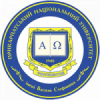Case–Study as One of the Innovative Educational Technologies and Its Use in Biology Classes
DOI:
https://doi.org/10.15330/jpnu.10.1.114-125Keywords:
case-study, educational technology, evaluation criteria, case structure, biologyAbstract
Today, the Ukrainian education system is undergoing important large-scale transformations. Students of modern schools are required, as the main result of education, to master a set of universal learning activities that allow them to set and solve the most important life tasks that they may face directly in adult life. So, for example, in relation to different sections of biology, students must understand: what the subject teaches them, why they need biology, how the studied concepts are related to practical tasks and everyday life.
In this regard, a new approach to the construction of the content of education, as well as to the use of modern educational technologies of learning, is envisaged. As you know, one of such effective technologies is life-situational learning using the case-study method. Active use of case-study in education began relatively recently, and now this approach has become one of the most effective learning technologies. This method confirms the didactic significance and relevance of the use of case technology in the process of teaching biology as an effective means of increasing students' biological knowledge. Teachers highlight a number of advantages of the case-study compared to traditional teaching methods: practical orientation, interactive format, development of soft skills of students. Scientists have developed several classifications of cases. But, despite the variety of cases, they all have a typical structure, which includes: a plot part, a methodological part, and an informational part.
The article examines the features of the case-study and the possibilities of its application at biology lessons. Samples of cases from the "Human Anatomy" course are also offered.










